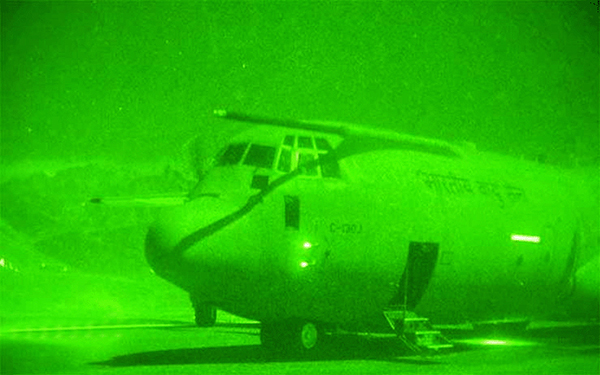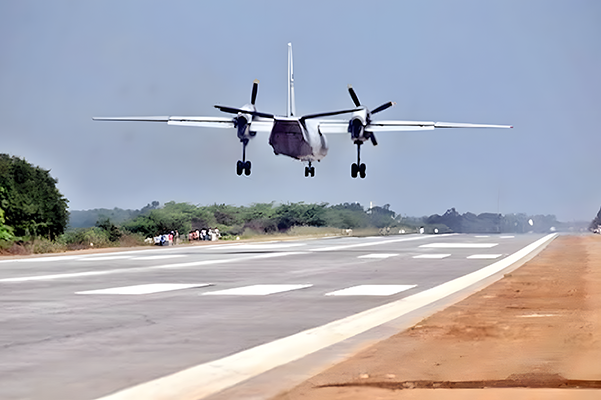The Indian Air Force (IAF) in the last four years has been slowly, away from spotlight, upgrading its infrastructure facilities in at least 20 air bases focused on China-centric operations or on having a dual area of operation.
These upgrades include not just construction of new underground munition centres, hardened aircraft shelters and taxiways but also upgradation of navigational aids, besides setting up of new radars and base defence systems.
While the plans were already in motion, the military tensions with China since 2020 has led to a more faster and focussed approach. They explained that even as the tensions with China was just beginning in May 2020, the defence ministry had signed a Rs 1,200 crore contract with Tata Power SED (TPSED) for Modernisation of Air Field Infrastructure (MAFI) of 37 airfields for IAF, Indian Navy and Indian Coast Guard.

This was a follow-on program to MAFI Phase 1 that included upgradation of 30 airfields of IAF. The project included installation and commissioning of modern airfield equipment like Cat-II Instrument Landing System (ILS) and Cat II Air Field Lightning System (AFLS) among others, which were directly connected to Air Traffic Control (ATC).
There has also been an increase of infrastructure projects. These infrastructure projects were always on the cards, and work was initiated on some of these airfields prior to the stand-off with China. The work involved not just repair of runways and creation of additional taxi ways to enable better tempo of operations, the stand-off has led to increased need for storage of spare parts and munitions. Across air bases, the focus is to have hardened underground munition centres.
New radars have been set up at some bases close to the Line of Actual Control (LAC), besides increase in defensive capabilities. One of the reasons for new infrastructure building is also to cater to drones operations.
The Army has created integrated aviation Brigades which have seen a larger concentration of drones and helicopters in specific areas. They are based at IAF bases, which also cater to IAF’s own set of drones.
The activation showcased the high level of synergy and liaison between civil agencies such as National Highways Authority of India (NHAI), district administration, state police and the IAF towards conduct of complex multifaceted activities.
ALG Upgrades
Following the approval from the Cabinet Committee on Security (CCS) in June 2009, the IAF took up a project to upgrade eight ALGs in Arunachal Pradesh at an estimated cost of Rs 1,000 crore which have since been operationalsied. The eight ALGs in Arunachal Pradesh include Tuting, Mechuka, Along, Tawang, Ziro, Pasighat, Walong and Vijaynagar. In addition, several new emergency landing strips were developed on national highways across the country. Further, the ALG Nyoma, located at an altitude of about 13,700 feet, is now being converted into a full runway of over 9,000 feet, making it capable of handling fighter jets. Work which commenced last August is expected to be ready by 2025. The ALG at Daulat Beg Oldi at an altitude of 16,700 feet, located very close to the LAC, is very critical for aerial connectivity to the Sub-Sector North.
Emergency Landing Facilities
On March 18, IAF fighter and transport aircraft carried out operations on an Emergency Landing Facility (ELF) airstrip on National Highway 16 near Addanki in Bapatla district of Andhra Pradesh.
Su-30 and Hawk fighters successfully carried out overshoots during the activation, while An-32 and Dornier transport aircraft landed and subsequently took off from the strip. The activation showcased the high level of synergy and liaison between civil agencies such as National Highways Authority of India (NHAI), district administration, state police and the IAF towards conduct of complex multifaceted activities.
Previously, such an activation was conducted on December 29, 2022. The 4.1 km long and 33 metre wide concrete airstrip has been constructed by the NHAI as per specifications provided by the IAF. While other airstrips are already operational in various parts of the country, this ELF in Andhra Pradesh has been recently operationalised in peninsular India.
ELF highway airstrips enhance flexibility of air operations during contingencies and are invaluable assets during Humanitarian Assistance and Disaster Relief (HADR) operations in far flung areas. IAF, with Ministry of Road Transport and Highways (MoRTH) are working jointly for creation of ELFs at suitable locations.
READ MORE: IAF MODERNISATION – Airbus C-295 Transport Aircraft Inducted
Earlier on 1 April, the IAF conducted emergency landing trial runs of both fighter jets and helicopters on the newly constructed 3.5-kilometre emergency landing facility in Anantnag, South Kashmir. The exercise took place during the night time and aimed to test the facility’s readiness and effectiveness in handling various emergency scenarios.
The emergency landing facility, constructed for Rs 119 crore, is strategically located on the Srinagar-Jammu national highway at Bijbehara. It is designed to support operations during times of war, natural disasters, and other emergencies, including relief material air drops and transportation of stranded individuals. The completion of this facility marks a crucial milestone in enhancing the region’s emergency response capabilities.
Work on the project started in 2020 and was completed in late 2023 under a program carried out jointly by the IAF and the Ministry of Road Transport and Highways for the creation of ELFs at different locations across the country.
Situated along the bustling Srinagar-Jammu National Highway, this emergency landing strip boasts essential amenities tailored to cater to the needs of fighter aircraft. Among its features are designated parking slots ensuring swift and organized deployment, an air traffic control (ATC) tower to manage incoming and outgoing flights seamlessly, and two entry gates positioned at either end of the strip on the highway, facilitating efficient access and egress for aircraft operations.
The trial runs involved the participation of various aircraft, including Sukhoi fighter jets and Chinook and Mi-17 helicopters. The exercises showcased the precision and capability of these aircraft in utilizing the emergency landing facility, emphasising their readiness for emergencies.
Night Landing at Kargil
An IA C-130 Super Hercules tactical transport aircraft made a night landing at the Advanced Landing Ground (ALG) in Kargil on 7 January, employing terrain masking enroute, the exercise also dovetailed a training mission of the Garud special forces team.
This successful night landing at such a strategic location not only underscores the heightened capabilities of the Indian Air Force but also serves as a testament to their dedication to operational excellence and preparedness in challenging terrains.
Earlier the transport aircraft had been landing at Kargil during the day and this was the first night landing. Located at an altitude of around 10,000 feet, the ALG is a restricted airstrip with unidirectional approach surrounded by rough terrain. It also does not have night landing facilities. This demonstrates the capability to carry out specialised missions round the clock in this area.
As the only airstrip in this area, the Kargil ALG is significant and critical for any exigency. In Jammu and Kashmir, the IAF has full-fledged airfields at Srinagar, Awantipora, Udhampur and Jammu. In Ladakh, the IAF has airfields at Leh and Thoise and ALGs at Nyoma, Fukche and Daulat Beg Oldi (DBO). In the last decade, the Defence Ministry has reactivated a series of ALGs close to the border, especially along the Line of Actual Control (LAC) with China.
READ MORE:DEFENCE REVIEW 2023 – IAF Operations and Exercises
C-130J Super Hercules
The IAF’s C-130J Super Hercules demonstrated its remarkable versatility in April 2023 during a daring night rescue mission in Sudan. Currently, the IAF operates 12 C-130J aircraft, stationed at the 77 Squadron at Hindan and the 87 ‘Wings of Valour’ Squadron at Panagarh. The C-130J is a highly integrated and sophisticated airlifter designed to support India’s special operations requirements. Equipped with an infrared detection set, it can perform precision low-level flying, airdrops, and landings in blackout conditions. Featuring self-protection systems and other advanced capabilities, the C-130J ensures survivability in hostile air defence environments. Additionally, the aircraft has air-to-air receiver refueling capability for extended-range operations. Beyond its role as a transport aircraft, the C-130J carries out a diverse range of missions, including special operations, aerial refueling, search and rescue, paradrop, electronic surveillance, and weather reconnaissance.


















